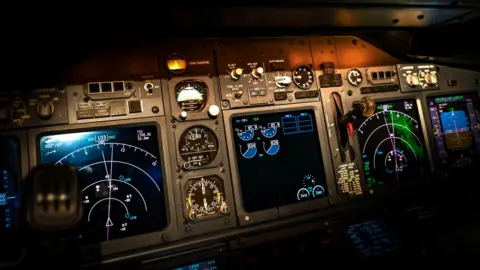The tragic crash of Jeju Air Flight 2216, which occurred in December 2024 and resulted in 179 fatalities, has raised serious questions regarding pilot decisions during the emergency. Investigators have revealed that, moments before the crash, the pilots turned off one of the aircraft's engines that had sustained minor damage from a bird strike, ultimately leaving the plane reliant on only the more severely damaged engine that later caught fire.
This misjudgment is believed to have caused a significant loss of electrical power, inhibiting the aircraft’s maneuverability and complicating the landing process. Without adequate thrust, the plane attempted to land without its landing gear deployed, skidding along the runway, colliding with a concrete wall, and catching fire shortly thereafter. In a tragic outcome, only two flight attendants survived, while all passengers perished.
As details emerge, experts from the U.S. have begun scrutinizing the pilots' actions during the flight. Some suggest that they might have misidentified which engine needed to be shut down amidst the chaos. It is essential to note, however, that experts, like aviation safety analyst Joe Jacobsen, have cautioned against jumping to conclusions without thorough analysis of cockpit data and further investigation results.
The findings presented in an interim report to the victims' families have heightened tensions and lead to an outcry for accountability and transparency in the investigation. The Korea Aviation and Railway Accident Investigation Board continues its work to uncover exact circumstances surrounding this disastrous event, as families of the victims wait for justice and answers regarding the catastrophic miscalculation.
While the world anticipates the complete investigation report, discussions about emergency protocol and pilot training standards are likely to intensify, prompting reviews in aviation safety practices on a global scale.
This misjudgment is believed to have caused a significant loss of electrical power, inhibiting the aircraft’s maneuverability and complicating the landing process. Without adequate thrust, the plane attempted to land without its landing gear deployed, skidding along the runway, colliding with a concrete wall, and catching fire shortly thereafter. In a tragic outcome, only two flight attendants survived, while all passengers perished.
As details emerge, experts from the U.S. have begun scrutinizing the pilots' actions during the flight. Some suggest that they might have misidentified which engine needed to be shut down amidst the chaos. It is essential to note, however, that experts, like aviation safety analyst Joe Jacobsen, have cautioned against jumping to conclusions without thorough analysis of cockpit data and further investigation results.
The findings presented in an interim report to the victims' families have heightened tensions and lead to an outcry for accountability and transparency in the investigation. The Korea Aviation and Railway Accident Investigation Board continues its work to uncover exact circumstances surrounding this disastrous event, as families of the victims wait for justice and answers regarding the catastrophic miscalculation.
While the world anticipates the complete investigation report, discussions about emergency protocol and pilot training standards are likely to intensify, prompting reviews in aviation safety practices on a global scale.






















